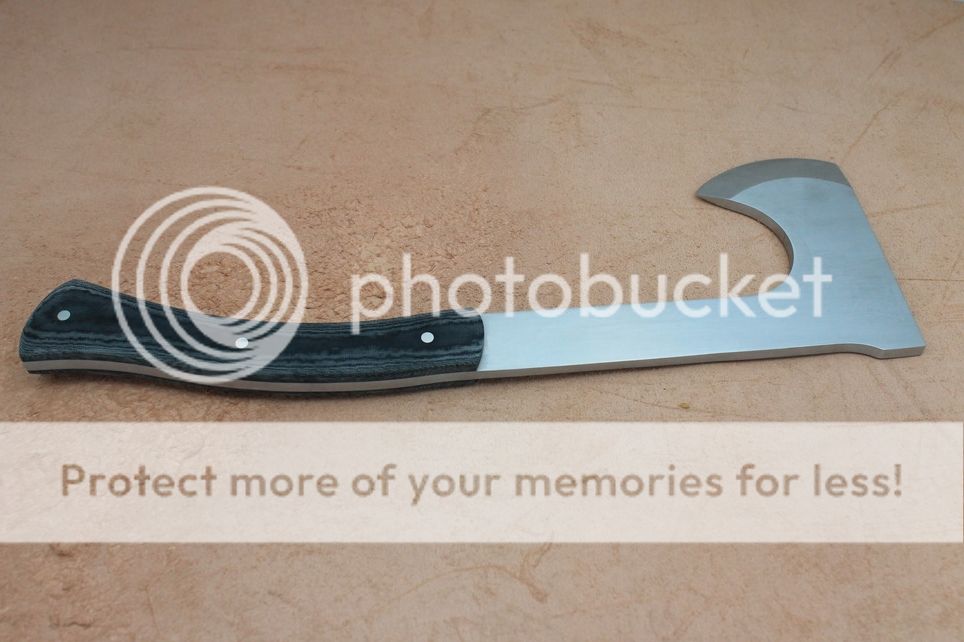- Joined
- Jul 7, 2013
- Messages
- 2,614
I posted this in the Bladesmith Q&A section, but I figured that I would post here as well due to the experience of the members in this subforum...
I am doing a small run of full tang hatchets, and I needed some guidance for the edge geometry. I will do some testing once they are heat treated, but I was looking for a starting point.
They are 1/4" 1075 steel. I will be aiming for 57-58 rockwell. They will be flat ground, with a convex secondary bevel
I would like to know what edge thickness I should use before sharpening? Does .04" sound right? With a 25 dps secondary bevel?
I am doing a small run of full tang hatchets, and I needed some guidance for the edge geometry. I will do some testing once they are heat treated, but I was looking for a starting point.
They are 1/4" 1075 steel. I will be aiming for 57-58 rockwell. They will be flat ground, with a convex secondary bevel
I would like to know what edge thickness I should use before sharpening? Does .04" sound right? With a 25 dps secondary bevel?


